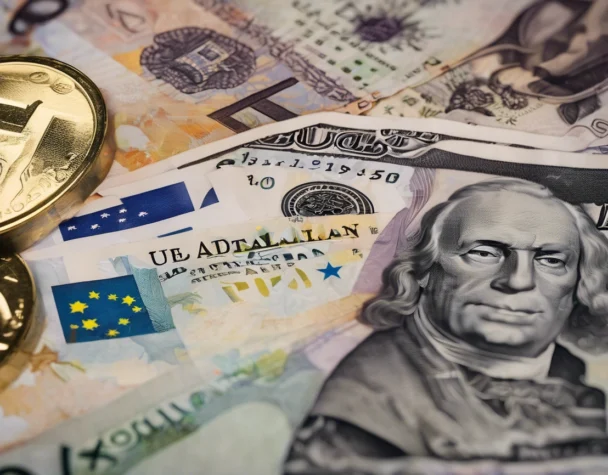
Dollar Declines While Euro and Aussie Strengthen Ahead of Key Central Bank Moves
Mon, June 02, 2025Euro and Aussie Dollar Rise Amid Central Bank Divergence
As of early June 2025, the foreign exchange market is showing strong directional moves fueled by diverging central bank policies, fiscal uncertainty in the U.S., and increased geopolitical risks. One of the key developments is the strength of the euro, which is trading around 1.1355 against the U.S. dollar. Despite expectations that the European Central Bank (ECB) will cut its deposit rate by 25 basis points to 2.00% on June 5, the euro has held steady. Analysts attribute this to market pricing already factoring in the cut, as well as the weakening dollar, which is losing steam due to U.S. debt concerns and a shift in investor sentiment.
Read more on the ECB rate outlook
Meanwhile, the Australian dollar is trading at 0.6441, buoyed by seasonal strength and expectations that the Reserve Bank of Australia will hold rates steady. The Aussie has benefited from broader risk-on sentiment and improving commodity flows, even as global trade uncertainties remain elevated.
The British pound, currently at 1.3457 against the U.S. dollar, continues to hover near multi-year highs. However, resistance has emerged at current levels, suggesting a potential consolidation phase unless upcoming U.K. economic data surprises to the upside.
Check GBP/USD technical analysis
U.S. Dollar Faces Pressure Despite Rising Treasury Yields
Despite a rise in Treasury yields, the U.S. dollar index has declined nearly 4.7% since April. This decoupling of the dollar from interest rate trends reflects a deeper concern in global markets: fiscal sustainability in the U.S. Analysts point to rising political pressure on the Federal Reserve and questions surrounding long-term debt management as key contributors to the dollar’s underperformance.
More on dollar-yield decoupling
The USD/JPY pair is currently at 143.88, as Japan’s Ministry of Finance continues to intervene subtly in FX markets to avoid rapid yen depreciation. The Japanese yen remains under pressure due to ultra-low interest rates, but recent efforts to stabilize the currency have produced short-term gains.
Safe-haven demand has helped strengthen the Swiss franc, with USD/CHF falling to 0.8239. The franc has gained ground due to global risk aversion, particularly surrounding the U.S. fiscal debate and unstable emerging market debt profiles.
Emerging market currencies are also riding the wave of dollar weakness. The South African rand (USD/ZAR) has broken below the 18.00 level, with some analysts projecting a move toward 17.65 in the near term if the trend holds.
See USD/ZAR outlook
As central banks prepare for upcoming rate decisions and the U.S. economy navigates mounting fiscal scrutiny, traders can expect continued volatility in the FX space. All eyes are now on June’s inflation reports and employment data, which will shape the next wave of price action across major pairs.

